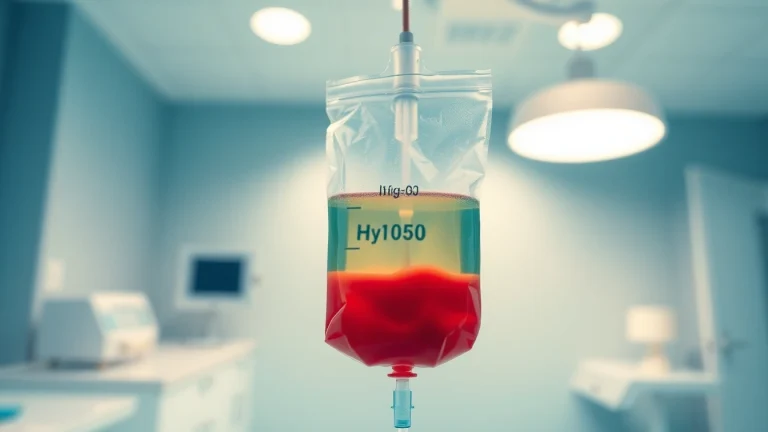
Effective Fat Loss Training Strategies for Every Fitness Level
Understanding Fat Loss Training
1. What is Fat Loss Training?
Fat loss training refers to a structured exercise program aimed at reducing body fat while maintaining muscle mass. It integrates various types of physical activities such as cardio workouts, strength training, and high-intensity interval training (HIIT) to create a holistic approach to weight loss. The primary goal is to create a caloric deficit, where the body burns more calories than it consumes, leading to fat loss over time.
It’s essential to highlight that fat loss training isn’t only about shedding pounds; rather, it’s about achieving a healthier body composition and improving overall fitness. This is an increasingly popular topic as more people seek effective ways to enhance their health, appearance, and physical performance.
Whether you are just starting or looking to optimize your current training routine, Fat Loss Training holds numerous principles and practices that can aid individuals with varying fitness levels.
2. Benefits of Fat Loss Training
Participating in a well-structured fat loss training regimen offers numerous benefits that extend beyond just weight loss. Some of these benefits include:
- Improved Metabolic Health: Engaging in regular physical activity can enhance insulin sensitivity, lower blood sugar levels, and improve overall metabolic function.
- Increased Muscle Mass: Strength training, a crucial component of fat loss training, preserves lean muscle mass, which is essential for maintaining a healthy metabolism.
- Enhanced Mood and Energy Levels: Regular exercise releases endorphins, often referred to as the “feel-good hormones,” which can significantly enhance mood and reduce feelings of stress and anxiety.
- Better Fitness Levels: A comprehensive fat loss training program helps improve cardiovascular endurance, strength, flexibility, and overall fitness, making everyday activities easier.
- Healthier Body Composition: Beyond losing weight, fat loss training promotes a healthier ratio of muscle to fat, leading to improved appearance and self-esteem.
3. Key Principles of Effective Fat Loss Training
Successful fat loss training is built upon several key principles that optimize results:
- Consistency: Regular training is crucial for seeing progress. Aim for at least three to five workouts per week that incorporate both strength training and cardio.
- Progressive Overload: Gradually increasing the intensity of your workouts challenges your body, promoting muscle growth and fat loss.
- Nutrition Integration: Combining exercise with a balanced diet that supports fat loss is vital. This includes a focus on whole foods, adequate protein intake, and a caloric deficit.
- Recovery: Allowing the body adequate recovery time is essential for muscle repair and overall performance. Overtraining can lead to burnout and injuries.
Choosing the Right Fat Loss Training Program
1. Factors to Consider When Selecting a Program
Selecting the right fat loss training program involves evaluating several factors:
- Current Fitness Level: Choose a program that matches your current fitness level to ensure it’s challenging yet attainable.
- Time Commitment: Assess how much time you can realistically dedicate to your training and choose a program that fits within those parameters.
- Personal Preferences: Consider what types of workouts you enjoy, as this will greatly affect your consistency and enjoyment.
- Availability of Equipment: Determine whether you have access to a gym or equipment at home and choose a program accordingly.
2. Comparing Workout Plans for Fat Loss
When gauging different workout plans for fat loss, consider the following:
- Program Structure: Look for programs that balance strength training, cardiovascular work, and flexibility sessions for comprehensive fitness.
- Duration: Programs that range from 4 to 12 weeks can provide structured progress towards fat loss goals.
- Success Stories: Research testimonials and success stories to gauge the effectiveness of each program.
3. How to Personalize Your Fat Loss Training
To maximize fat loss training, personalization is key. Here’s how to customize your regimen:
- Set Clear Goals: Establish specific, measurable, achievable, relevant, and time-bound (SMART) goals that motivate you.
- Monitor Your Progress: Keep a training journal that records workouts, body metrics, and feelings to make adjustments based on what works best for you.
- Listen to Your Body: Adjust the intensity or type of workouts based on your energy levels and recovery status.
Types of Workouts for Fat Loss
1. High-Intensity Interval Training (HIIT)
HIIT involves short bursts of intense exercise followed by brief rest intervals. This format not only burns a significant number of calories in a short time but also boosts the metabolism long after the workout is finished. Here are some tips for incorporating HIIT into your fat loss regimen:
- Start with a Warm-Up: Prepare your muscles with dynamic stretches before jumping into high-intensity intervals.
- Fifteen-To-Thirty-Minute Sessions: Aim for 20-30 minute periods of HIIT instead of extended sessions to maximize efficiency.
- Include Recovery: Ensure to incorporate proper recovery days after intense HIIT sessions to allow your body to recuperate.
2. Strength Training for Fat Loss
Strength training plays a crucial role in fat loss training. By building muscle mass, you increase your resting metabolic rate, which helps in burning more calories throughout the day. Here’s how to effectively incorporate strength training:
- Full-Body Workouts: Include major muscle groups in your sessions for optimal muscle engagement and fat burning.
- Use Compound Movements: Focus on exercises like squats, deadlifts, and bench presses that work multiple muscle groups simultaneously.
- Consistency is Key: Aim for at least two to three strength training sessions weekly to yield substantial results.
3. Cardio and Its Role in Fat Loss
Cardiovascular exercise is well-known for its effectiveness in calorie burning and fat loss. However, it is essential to integrate it smartly. Here are a few guidelines:
- Mix It Up: Combine different forms of cardio like running, cycling, and swimming to avoid plateaus and boredom.
- Moderate vs. Intense: A mix of both moderate-intensity steady-state (MISS) and high-intensity interval training can be beneficial.
- Duration Matters: Aim for at least 150 minutes of moderate aerobic exercise per week for significant results.
Nutrition’s Impact on Fat Loss Training
1. Essential Nutrients for Fat Loss
Nutrition is a cornerstone of any successful fat loss endeavor. Here are some essential nutrients to maintain in your diet:
- Protein: Adequate protein intake is vital to preserve muscle mass during calorie restriction. Aim for lean sources such as chicken, fish, beans, and legumes.
- Healthy Fats: Incorporate sources of healthy fats, such as avocados, nuts, and olive oil, which can help with satiety.
- Complex Carbohydrates: Prioritize whole grains, fruits, and vegetables that provide sustained energy and essential vitamins and minerals.
2. Meal Planning and Timing
Strategic meal planning and timing can dramatically influence your training outcomes:
- Pre-Workout Nutrition: Consuming a meal rich in carbohydrates and protein about 30-60 minutes before a workout can optimize energy and performance.
- Post-Workout Nutrition: Focus on recovering with a meal that includes protein and carbs within 30 minutes after exercising to aid muscle repair.
- Frequent Small Meals: Eating smaller, balanced meals throughout the day can help manage hunger and boost metabolism.
3. Common Nutritional Mistakes to Avoid
While focusing on nutrition, beware of common pitfalls that can hinder fat loss progress:
- Skipping Meals: Skipping meals can lead to overeating later in the day and disrupt metabolism.
- Excessive Restriction: Severely restricting calories can lead to nutrient deficiencies and unwanted muscle loss.
- Liquid Calories: High-calorie beverages can quickly add up without providing feelings of fullness. Prioritize solid whole foods over sugary drinks.
Tracking Progress in Fat Loss Training
1. Setting Realistic Goals
Progress tracking begins with setting realistic and attainable goals. Here are some tips:
- SMART Goals: Make sure your goals are Specific, Measurable, Achievable, Relevant, and Time-bound to ensure clear direction.
- Focus on Non-Scale Victories: Celebrate achievements beyond the scale, such as increased strength or improved stamina.
2. Effective Methods for Measuring Progress
There are various ways to track your fat loss journey effectively:
- Body Measurements: Regularly measure various body parts (waist, hips, thighs) to track changes in composition.
- Progress Photos: Take before-and-after photos to visualize changes in your physique over time.
- Fitness Logs: Maintain logs of your workouts and changes in performance metrics to gauge improvements.
3. Adapting Your Fat Loss Training Based on Results
Data analysis is crucial for refining your training plan:
- Reviewing Progress: Regularly review your progress and adjust your caloric intake or workouts based on results.
- Seeking Professional Guidance: If plateauing, consider consulting a trainer or nutritionist for tailored guidance.


